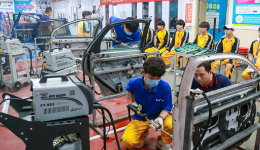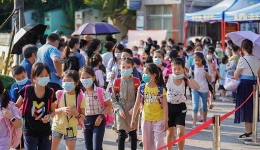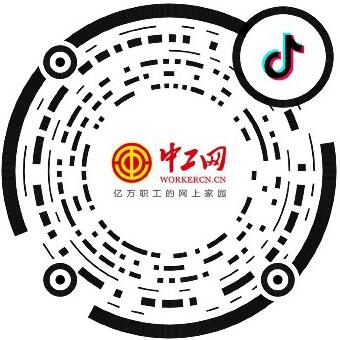Xinhua Viewpoint
Original title: How many steps are needed for a good labor class? Subject
——Observation on the effect of the implementation of the new curriculum standard of labor education for two years (subtitle)
Pancake, dumplings, steamed Wowotou...... Recently, the labor education activities of Xuhai Road Kindergarten in Xuzhou City, Jiangsu Province became popular on the Internet. The children were so absorbed in cooking that they were praised by many netizens. Parents from other provinces even brought their children to the kindergarten for consultation.
In 2022, labor courses will officially become an independent course for primary and secondary schools in China. Since the implementation of the new curriculum standard two years ago, how has the labor class gone? How can children learn to work and love to work? Xinhua Viewpoint reporters conducted interviews in many places.

On April 11, children from Xuhai Road Kindergarten in Xuzhou, Jiangsu, were making delicious food. (Photographed by Wu Yingjing, a reporter from Xinhua News Agency)
Basically, enough work has been done, and some labor courses have become popular "out of the circle"
"In fact, in addition to making delicious food, our kindergarten children have learned a lot of labor skills, such as raising poultry, knitting, sewing, tea art, ink rubbing, etc." Zhang Qian, the head of Xu Hailu Kindergarten, said that the children's labor mainly focuses on self service, as well as handicrafts and life experiences.
The reporter has visited many places and found that the labor classes in schools around the country have basically been fully opened, and the labor education has gradually become curricular and standardized. Taking Xuzhou City as an example, all local primary and secondary schools have been equipped with full-time and part-time labor teachers. In addition to developing school-based curriculum for labor education and ensuring that labor lessons are no less than one class hour per week, more than 500 primary and secondary schools have opened special areas to carry out labor practices such as planting and breeding.
Traditional handicraft production, happy farm on campus, cooking style display... various forms of labor education are being integrated into the campus life of primary and secondary students.
In the 40th Middle School of Guiyang City, Guizhou Province, there is a labor practice base on the campus, called "Half Mu Flower Field". Long Bei, the vice principal, told the reporter that the flower field was originally barren yellow soil. The teacher and students worked together to collect kitchen waste in the canteen and burn fat soil to transform the flower field into mature soil that can be cultivated. Now, several seasons of fruits and vegetables have been planted.
Shuangshi Middle School in Xiamen, Fujian Province has developed 43 labor education courses such as pottery, embroidery, paper cutting and rattan weaving, and has compiled 4 school-based textbooks. "These courses are all based on students' interests and questionnaires, which are very popular among students." Ouyang Ling, the headmaster, said that, taking rattan weaving courses as an example, children can freely design shapes and choose colors. Under the guidance of teachers, they can gradually master skills, not only exercise their manual ability but also test their patience, and also feel the charm of intangible cultural heritage culture.

In the rattan weaving class offered by Xiamen Shuangshi Middle School, students made baskets creatively. (Courtesy of Shuangshi Middle School)
Some schools also try to organically integrate labor courses with other disciplines, so that students can gain multiple learning effects. Nanjing Lixing Primary School in Jiangsu Province has turned the eight mu practice base near the school into a medicinal garden, and teachers and students planted dangshen, polygonum multiflorum, honeysuckle, cassia seed, red wolfberry, etc. Students learn the Three Character Classic of Chinese Herbal Medicine in Chinese class, measure the land area in math class with different methods, and sing songs about Chinese herbal medicine in music class... From planting, collecting and drying Chinese herbal medicine to making sachets, the knowledge of all disciplines is integrated and converged.

On April 16, students of Nanjing Lixing Primary School weeded in the herb garden. (Courtesy of Lixing Primary School)
"It's easy to teach labor lessons, but hard to teach them well"
The reporter found that there are still some difficulties and problems in carrying out labor education in some schools. "It is easy to teach labor lessons, but difficult to teach labor lessons well" is the common feeling of many front-line labor teachers.
Some places pay insufficient attention to labor lessons, and some schools lack relevant software and hardware. "At present, the labor course is not the main subject of the entrance examination, but only an indicator of comprehensive quality evaluation. Under the influence of the utilitarian education concept, some schools and parents do not attach enough importance to labor education." Chen Mingxia, a professor at the School of Education of Fujian Normal University, said.
The reporter found that the labor education in some places is faced with problems such as insufficient labor practice sites, incomplete professional facilities and equipment, and lack of professional teachers. The labor classes are mostly taught part-time by the head teachers and physical education teachers, and the course form is relatively simple. "Our school has opened labor education classes, but the space is really limited, so there is no outdoor activities, and almost all of them are indoor teaching," said a labor teacher in a primary school in an urban area of Guiyang.
Some places place more emphasis on form than process, and labor education becomes a show. An urban primary school in southwest China led students to catch loaches in labor class, allowing children to experience the joy of harvest. However, these loaches are not fed by students, but directly bought from the market and put into the mud by the school.
In Fujian, a local primary school set up shelves on the roof for "three-dimensional planting". A head teacher of the school told the reporter that the planting process was basically done by teachers, and students were hardly involved. After planting, students need to submit hundreds of words of experience, and teachers need to use beautiful pictures and texts to show the achievements of labor education in each class, which adds additional burden.
In some places, it is "hot" inside the school and "cold" outside the school, and parents do the work for them. Some schools assign practical homework to students after labor class, such as cooking at home, mopping the ground, sericulture, etc. Mr. Pi in Suzhou, Jiangsu, complained that some homework forced parents to be "directors" and "screenwriters", not only to buy raw materials and process, but also to record comments, take photos and upload them. "Being busy breaks my heart and is more tired than my own work".
Let children grow up through labor
The labor class is concerned by the society and welcomed by students. A number of interviewed front-line teachers suggested that we should further strengthen the software, hardware and safety guarantee of labor education, constantly improve the evaluation system, and take good labor lessons.
On the one hand, we should strengthen the software and hardware guarantee of labor education. The reporter found that since 2022, the implementation opinions on labor education issued by various places all contain the principle provisions of "arranging a certain amount of public funds to carry out labor education", but most of them lack specific requirements, and the actual implementation process of funds, teachers and site security is uneven. Experts call on all localities to clarify the security standards as soon as possible, and support schools to do a good job in the construction of labor education courses, teaching facilities and places, teacher introduction and training.
In this regard, some places have taken steps to explore. In Shenzhen, Guangdong Province, public funds, after-school delay service funds and other funds are arranged as a whole, and the government purchases services to attract social forces to provide labor education resources and services. The Changzhou Municipal Labor Education Promotion Regulations issued in Changzhou, Jiangsu Province in 2023 stipulates that primary and secondary schools should arrange labor education funds at no less than 3% of the annual per capita total public funds for students, and schools should set up labor weeks every school year to organize students to participate in collective labor practices.
On the other hand, we should also strengthen the safety guarantee of labor education and strive for more parental support. Zhang Qian told the reporter that at the beginning of the labor education, Xu Hailu Kindergarten also faced some parents' doubts: "The children are still young, can they learn these skills? Is there any danger?" But after trying to explore and achieving results, parents' concerns were slowly dispelled.
Zhang Qian and other front-line teachers suggested that according to the characteristics of students' age, gender differences, physical conditions and other characteristics, appropriate labor items and contents should be selected, and the labor time and intensity should also be moderate. Before organizing and carrying out labor practice, the school should carefully investigate and eliminate various potential safety hazards, guide children to use labor tools in a standardized manner, strengthen the training of students' safety skills and emergency response ability, and prevent problems before they occur.
In addition, the evaluation system of labor education needs to be further improved. "The real purpose of labor education is to let students acquire labor skills." Wu Shuwei, vice principal of the Second Experimental Primary School in Jinjiang City, Fujian Province, said frankly that there are still problems in the current evaluation of labor education, such as emphasizing form over experience, emphasizing results over process. He suggested that teachers' comments, students' mutual comments, students' self-evaluation and parents' participation should be combined to help children correctly understand the value of labor and gain growth through labor. (Reporter Ke Gaoyang, Deng Qianqian, Zheng Minghong)





















